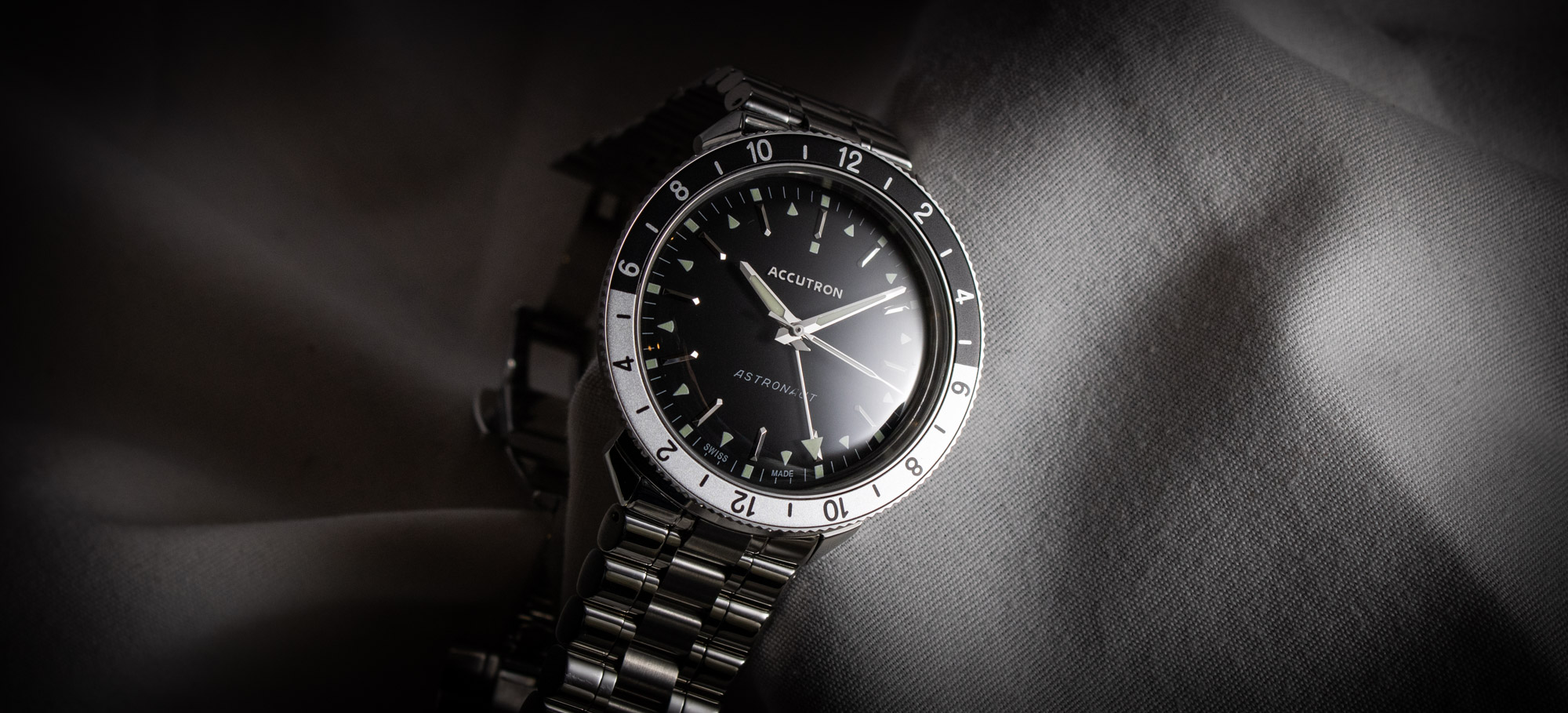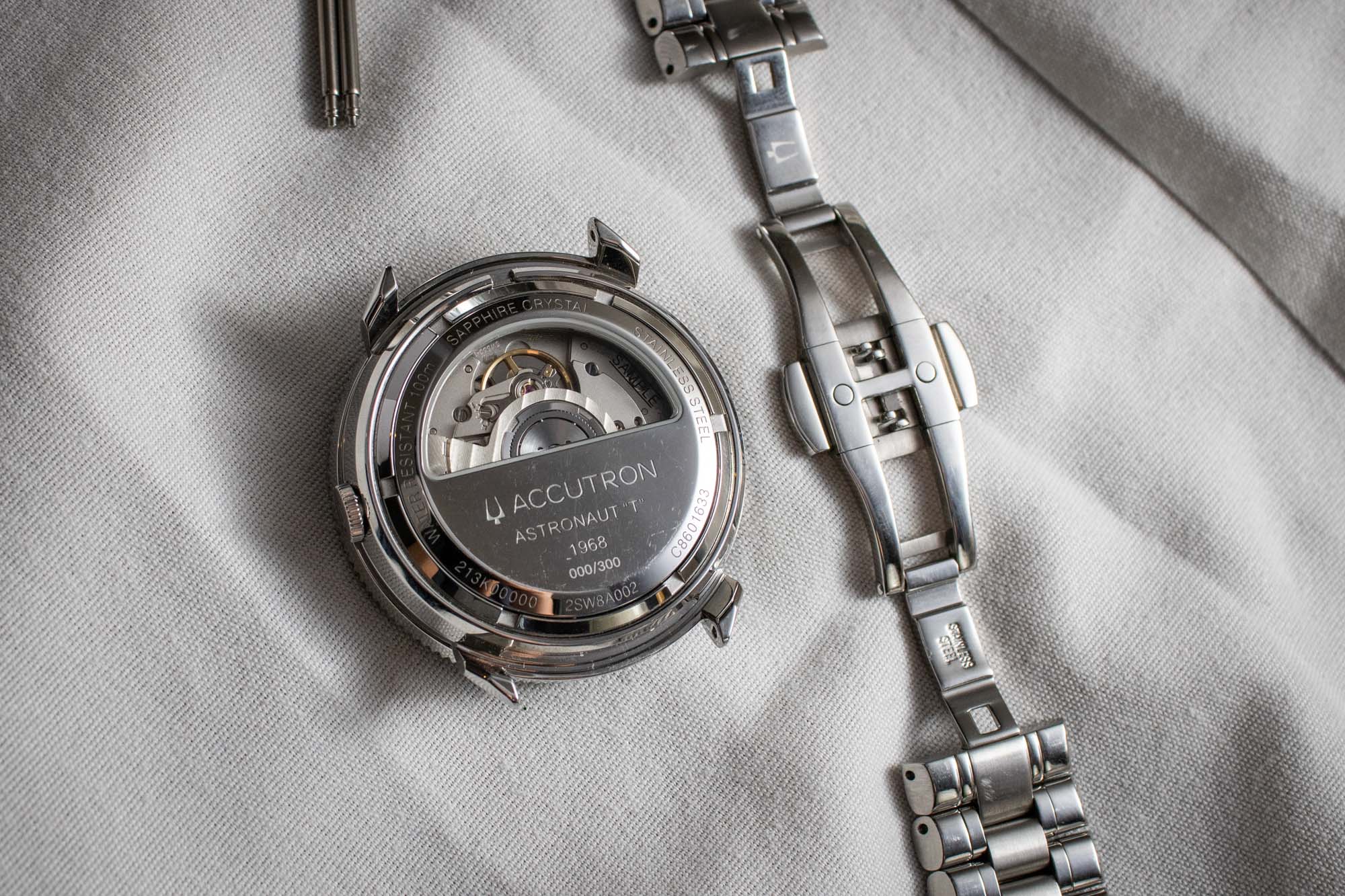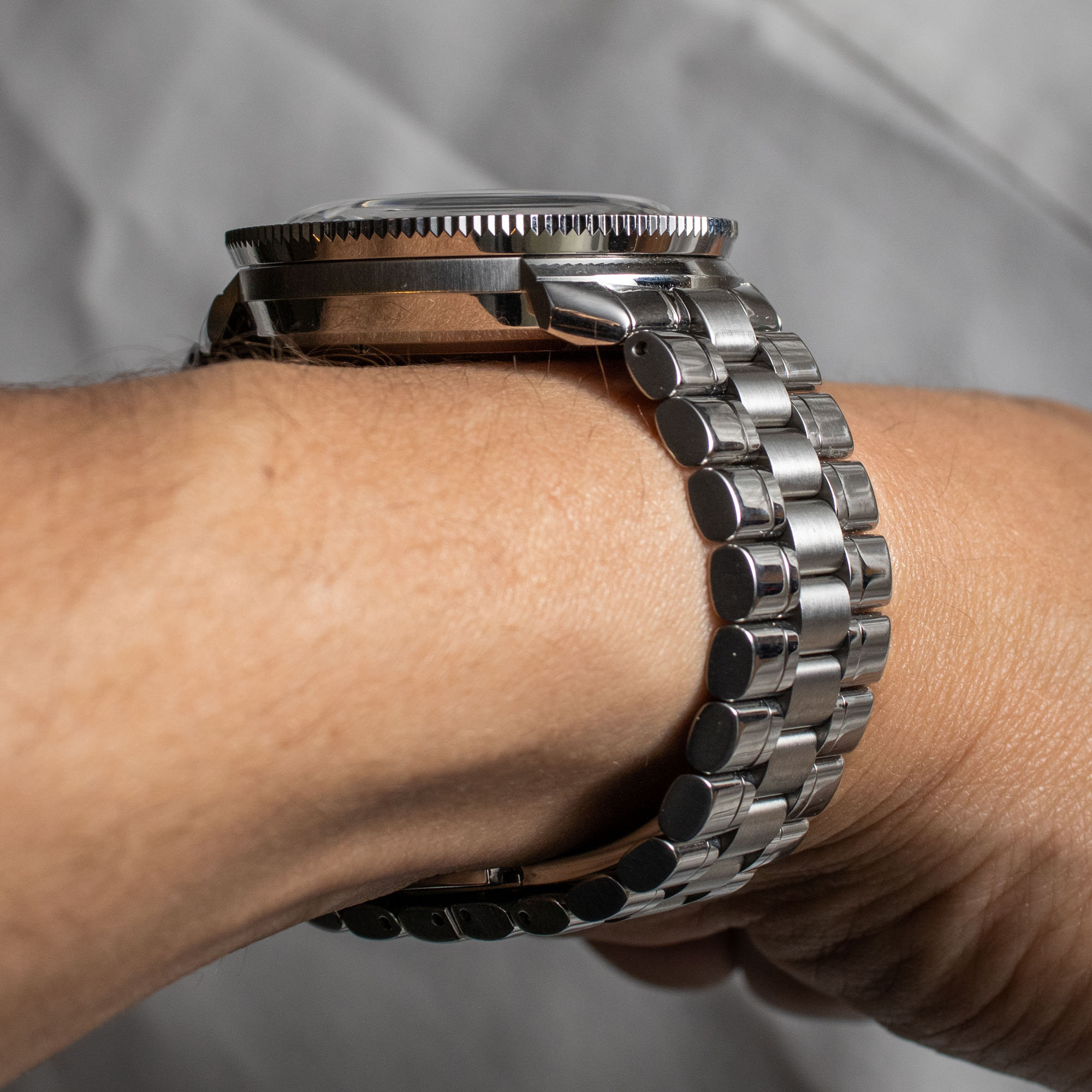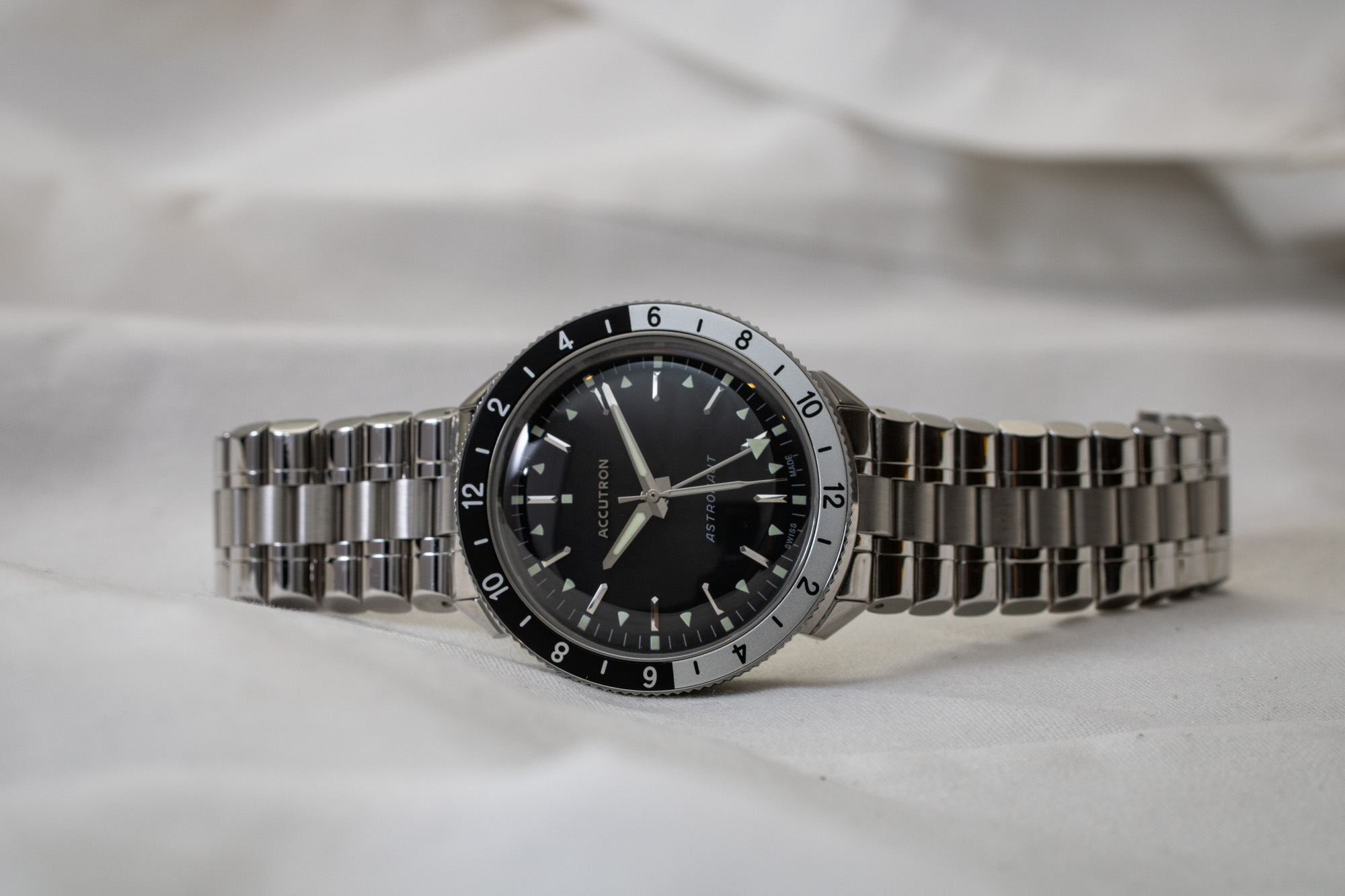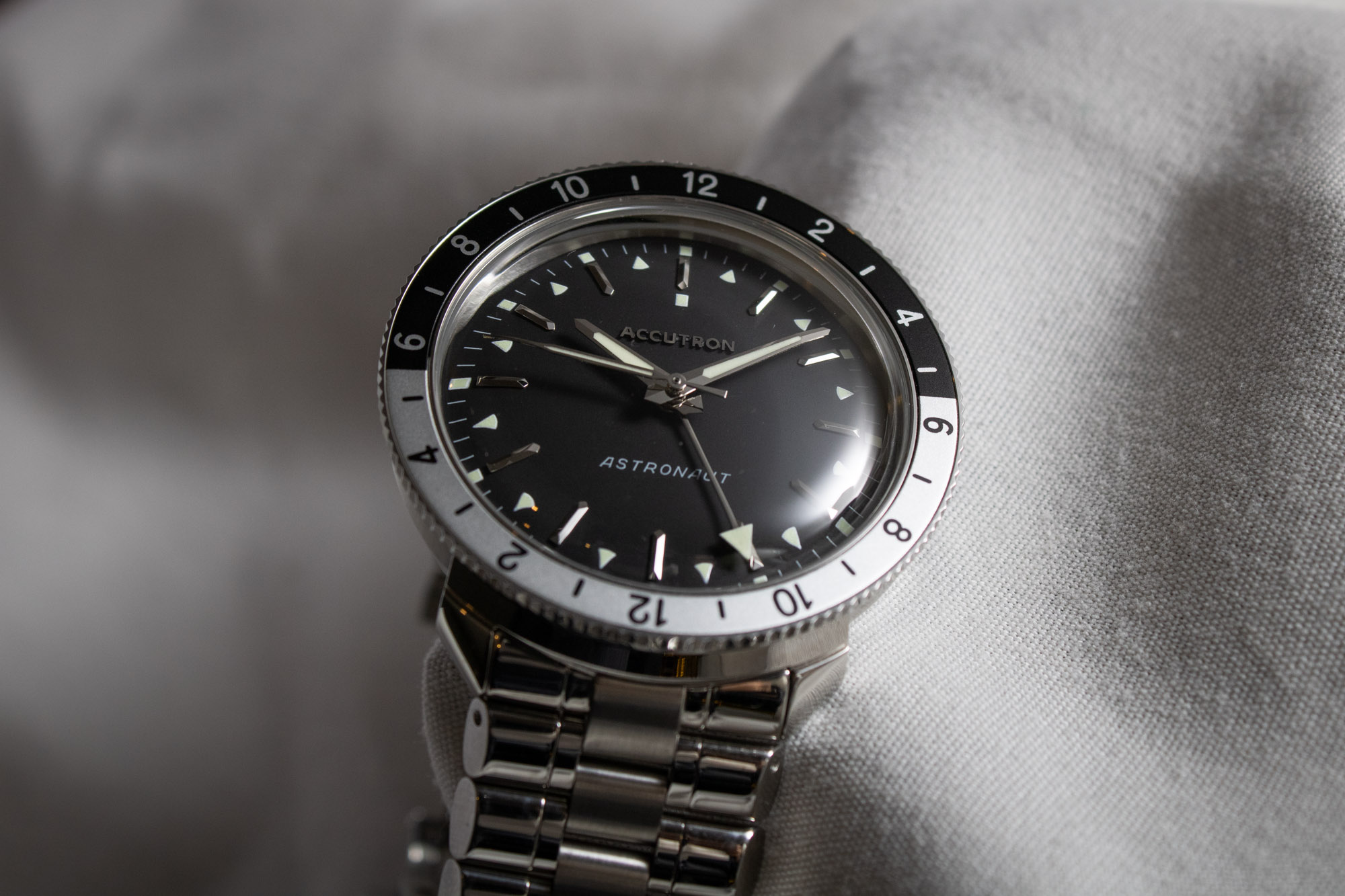
Since becoming its own standalone brand in 2020, Accutron has been focused on honoring the famous Bulova models that were originally powered by its famous “Accutron” tuning fork movement. That said, rather than making exact recreations of notable vintage references, the modern Accutron brand is creating updated versions that pay tribute to various historic models from its archives. Similar to how the modern Spaceview watches are clearly inspired by the originals from the 1960s but are ultimately very different timepieces (both inside and out), the new Accutron Astronaut 1968 “T” Version Limited Edition is heavily based on its historic predecessor. However, it is hardly an entirely faithful recreation of the original Astronaut watch, either in regards to its design or the movement used to power it.
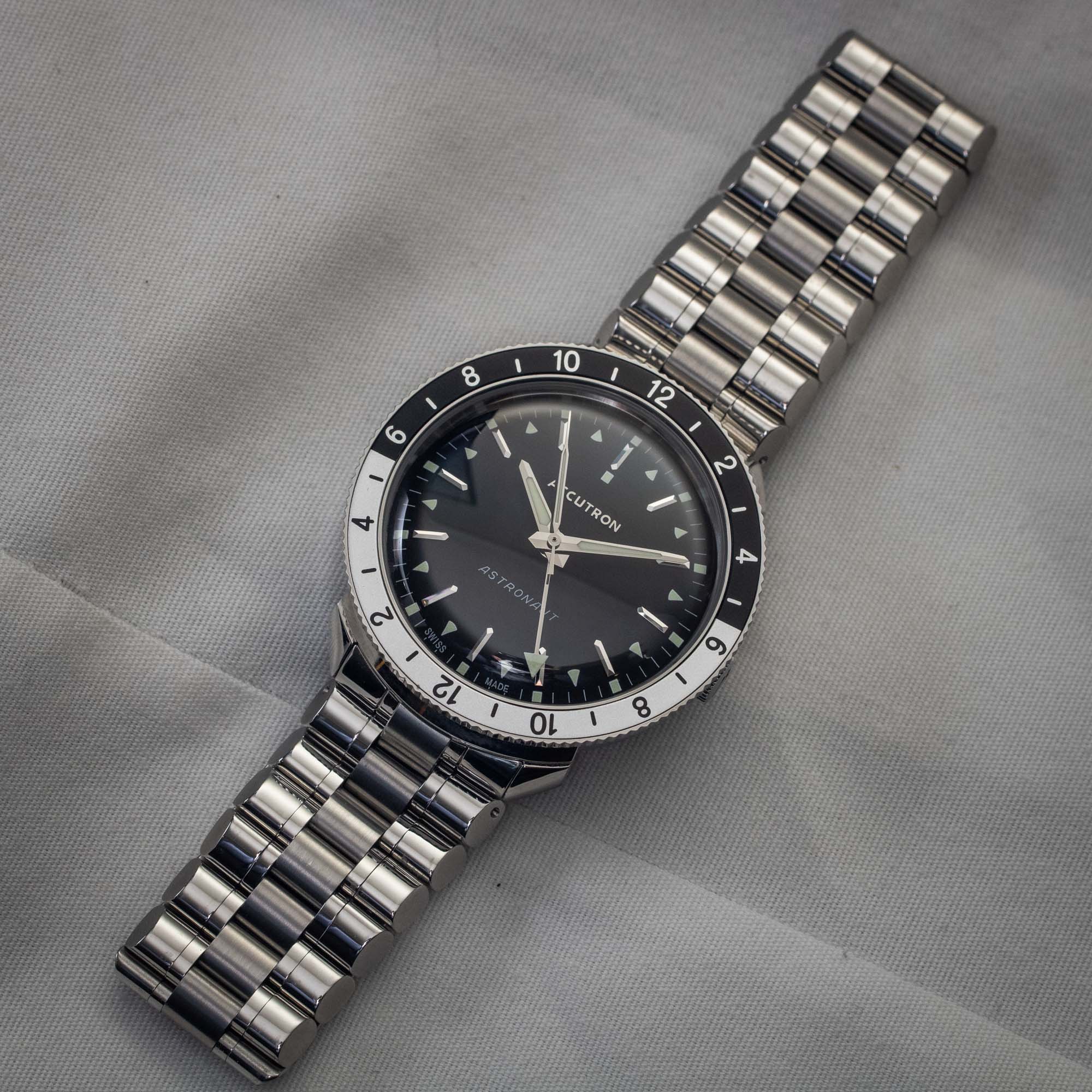
Crafted from stainless steel, the case of the modern Accutron Astronaut 1968 “T” Version is very similar in its overall shape and profile to the vintage Astronaut models, although it is slightly larger and beefier in every single way possible. While the middle case itself comes in at 39mm in diameter, the rim of the bezel extends to 41mm. Rather than sloping downward like the stainless steel bezels that were fitted to the majority of the vintage models, the bezel fitted to the modern version has an entirely flat top surface with its side profile sloping inward to meet the smaller middle case. Additionally, since the modern Accutron Astronaut bezel is inspired by the appearance of the one from the 1968 “T” version of the watch, it is fitted with a black and silver split-color aluminum insert, with a double 12-hour day/night scale, instead of having a 24-hour scale like most other versions of the Astronaut.
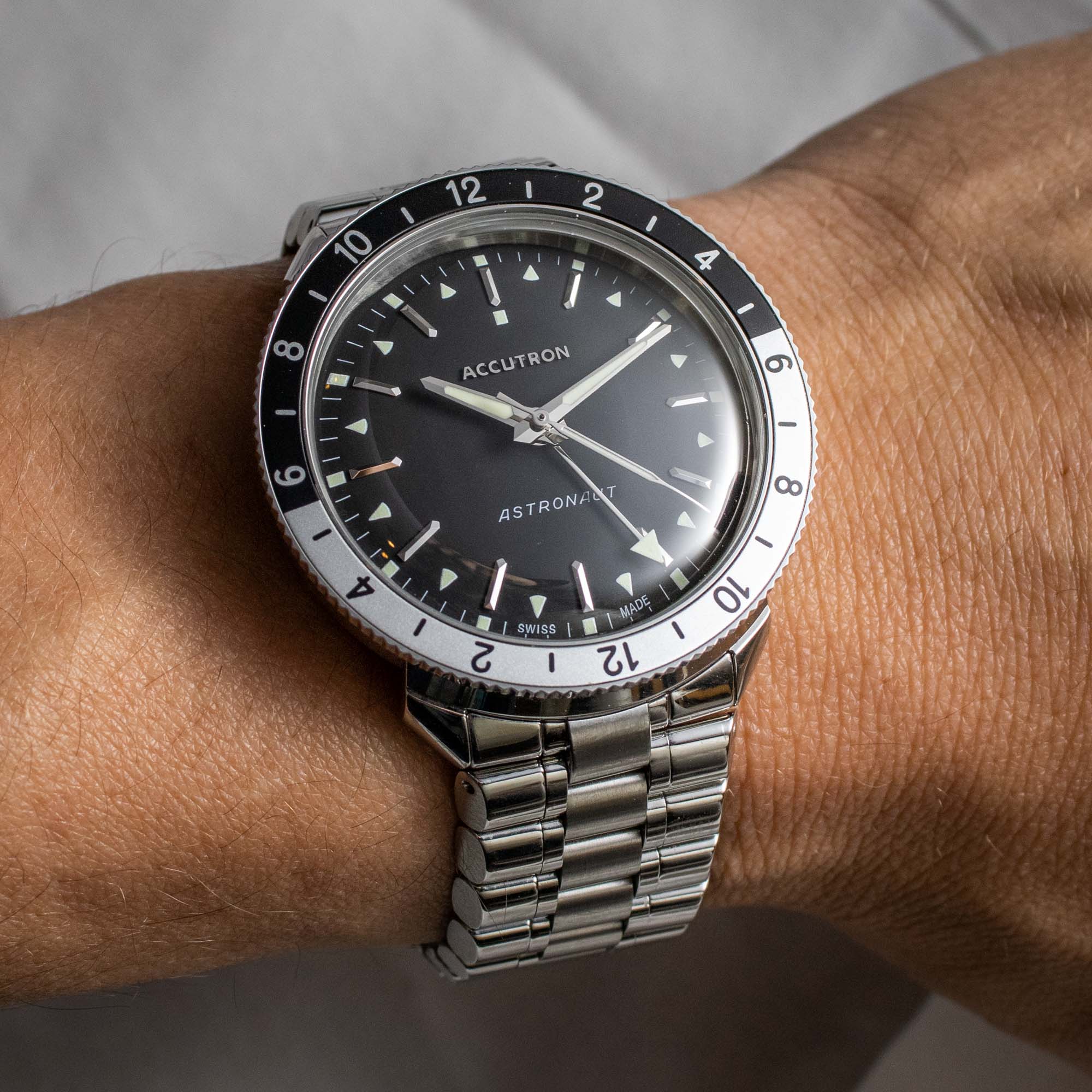
Using the double 12-hour day/night bezel fitted to the modern Accutron Astronaut is largely the same as using a 24-hour bezel. Rather than referencing the secondary time zone in a 24-hour format though, it will simply offer it in a more conventional 12-hour variety, with the light or dark color used to indicate day versus night hours. The bezel moves with a smooth non-clicking bidirectional motion. One thing that may aesthetically throw off some people is that one of the “6” markings on the bezel is entirely on the silver side, while the other appears entirely on the black half. What this means is that with the “12” indicator properly aligned with the 12 o’clock marker on the dial, the change from one color to the other on the bezel will not occur exactly along the horizontal axis of the watch. Although this results in the appearance that the bezel is constantly misaligned, this unusual design element is true to the split-color bezel that was fitted to the original “T” version of the vintage Accutron Astronaut that was produced in 1968.

Sitting within the bezel is a heavily domed sapphire crystal with an anti-reflective coating. The reverse side of the case is fitted with a two-part caseback that consists of a central section with engravings and a semicircular display window, along with an outer ring that screws down over the perimeter to help create 100 meters of water resistance. Not only does this two-part caseback structure help ensure that the engravings and display window will always be properly aligned, but it also somewhat mirrors the style of caseback that can be found on the vintage Accutron Astronaut models. For those models, this was a necessary feature due to the fact that they had both battery doors and hand-adjustment tabs located on their casebacks.
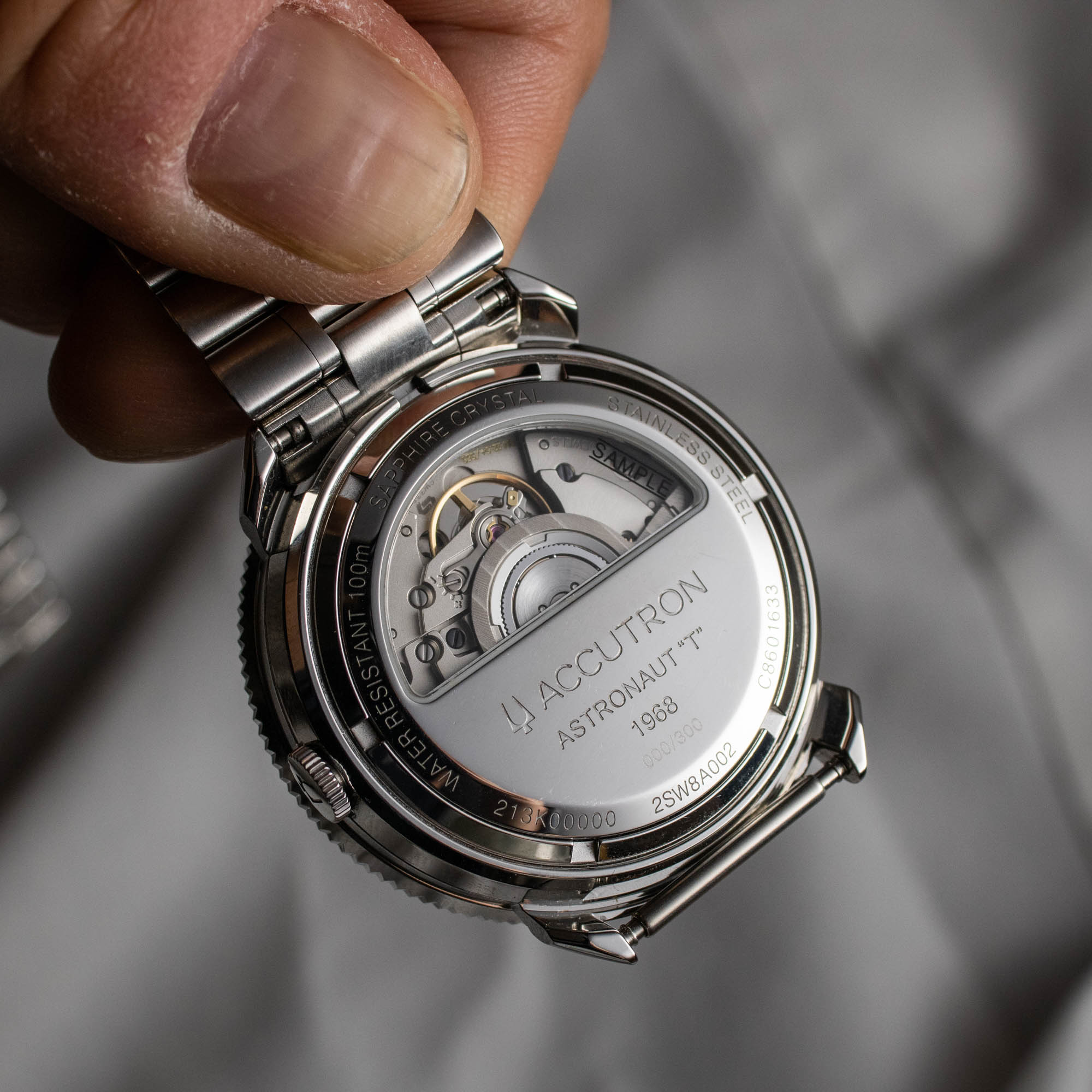
Due to the heavily domed sapphire crystal, the overall thickness of the modern Accutron Astronaut comes in at 13.85mm. While the short, sculpted shape of the lugs is very consistent with what can be found on the vintage models, they are set 20mm apart on the modern version and extend downward to create a fairly compact lug-to-lug profile of approximately 44mm-long. With that in mind, due to the way that the centers of the end-links protrude past the lugs, the actual lug-to-lug-dimensions of the modern Accutron Astronaut 1968 “T” Version ends up being closer to 48mm-long once you factor in the way that it connects to its bracelet. Additionally, while the end links are connected by a standard straight 20mm spring bar, they are also slightly recessed into the sides of the case. This means that only a small amount of clearance exists, and some third-party straps may be too thick to properly fit given the extremely short length of the lugs themselves.
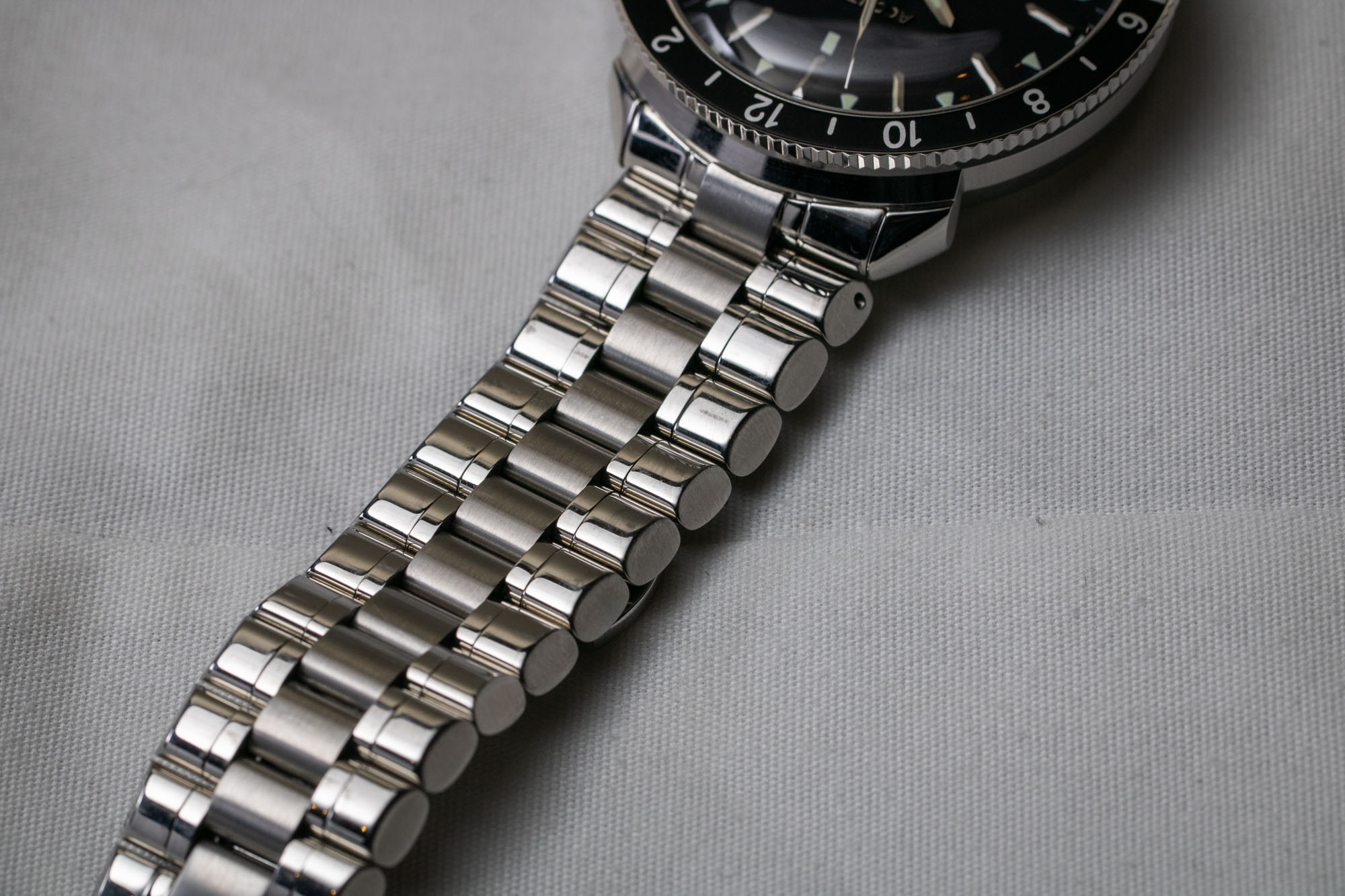
One of the other major departures from the original vintage Accutron Astronaut models is that this modern version features a small winding crown located at the 3 o’clock location, rather than the fold-out tab that was fitted to the casebacks of the originals. While the small flat shape of the signed crown does help to preserve the largely round profile of the watch (which was one of the defining traits of the original), it is undeniably a bit small and difficult to grip, and it kind of feels a bit like an afterthought or necessary concession that had to be made during the design process. On the original Accutron models, the fold-out tab was used as a way to highlight that there was no need to manually interact with the watch, other than if you wanted to set the time. However, given that the crown on the modern Accutron Astronaut 1968 “T” Version can be used to wind the watch, in addition to both setting the time and operating its independently adjustable 24-hour hand, I would have personally preferred to have a larger and better-integrated crown, provided that it wasn’t possible (or practical) to have its setting mechanism integrated into its caseback.
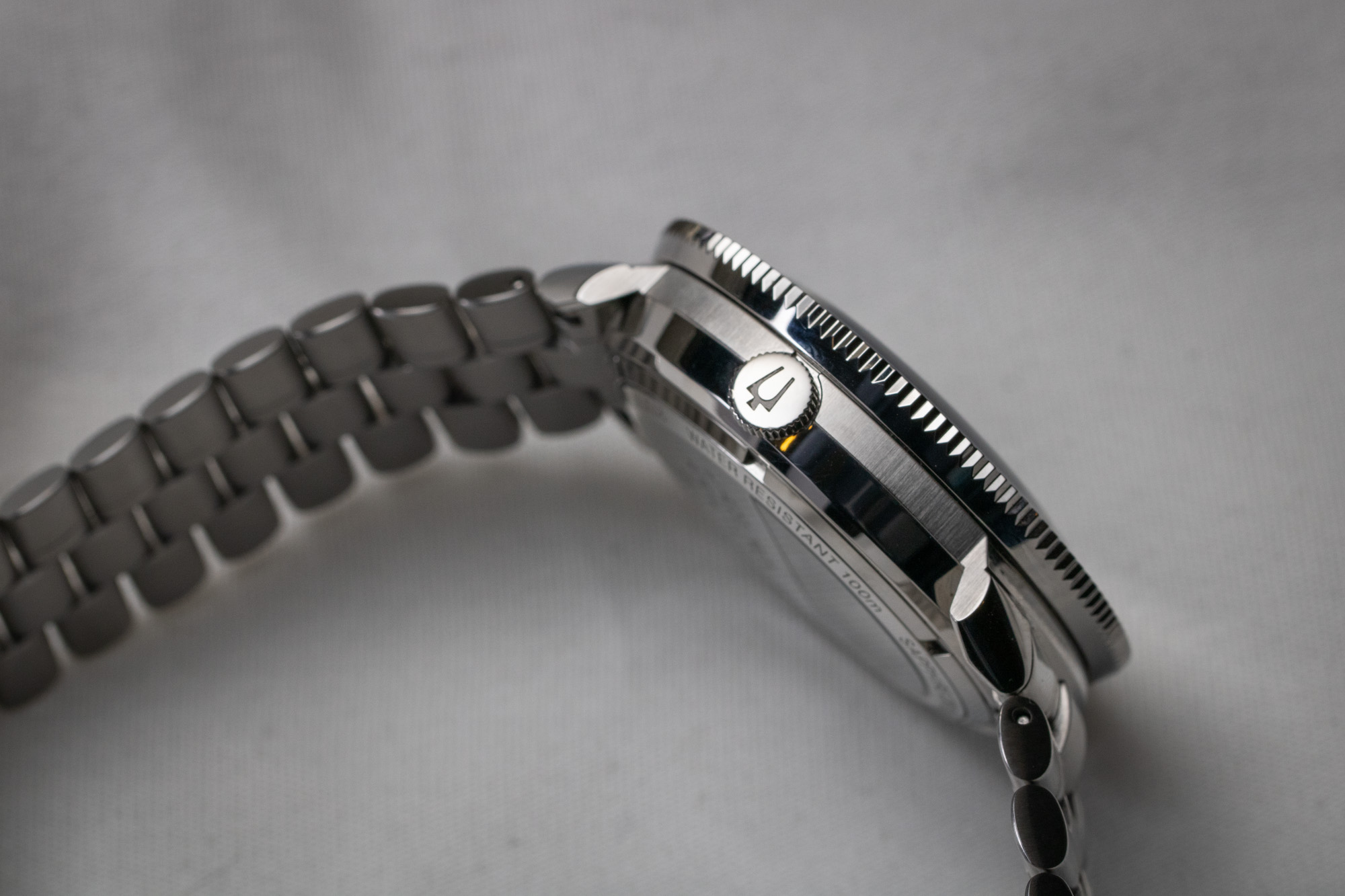
The reason the modem Accutron Astronaut 1968 “T” Version features a normal winding crown at the 3 o’clock location is that it is powered by a variation of the Sellita SW330 automatic movement. Running at a familiar frequency of 28,800vph (4 Hz), the version fitted to the new Accutron Astronaut offers an increased power reserve of approximately 56 hours, and just like other versions of this popular caliber, it features an independently adjustable 24-hour hand that can be set through the crown. With that in mind, due to the fact that the SW330 is naturally a date-displaying movement and the Accutron Astronaut doesn’t have a date window, there is half of a “ghost position” that exists when you pull out the crown to the first of the two setting positions. Rotating the crown in one direction will advance the 24-hour hand, although when you rotate it the opposite way, you can hear the hidden date mechanism click and move below the dial’s surface. Realistically speaking, this doesn’t impact functionality, but it does serve as a reminder that there exists a slight mismatch between the design of the watch and the movement used to power it.
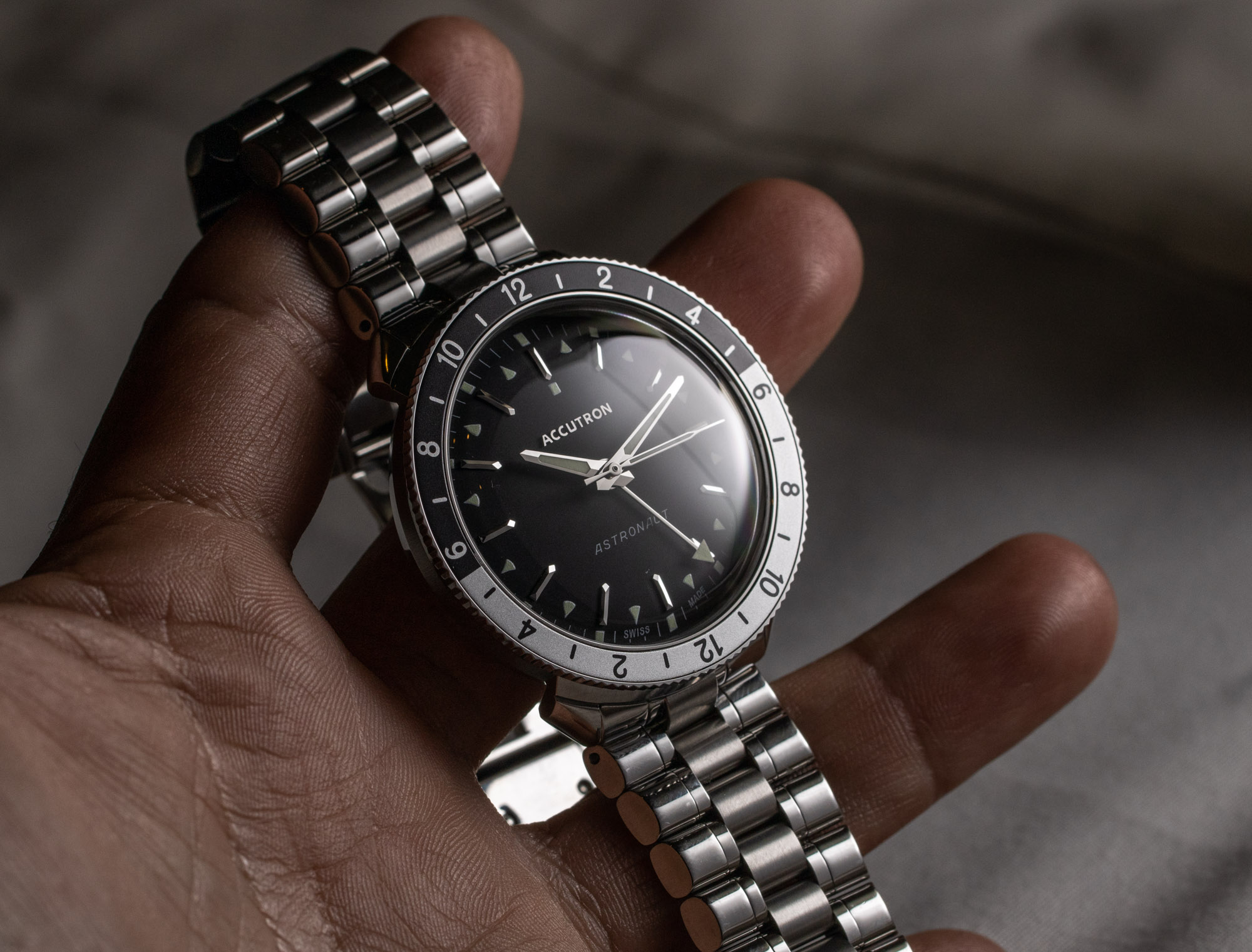
The dial of the new Accutron Astronaut 1968 “T” Version Limited Edition largely follows the design of the vintage original, and while it actually features a largely flat structure, the distortion provided by the heavily domed sapphire crystal makes it appear to have a significantly curved profile. A mix of faceted polished batons and small luminous shapes serve as the hour markers, while the four centrally-mounted hands are all given polished surfaces and luminous inlays. Although the dial printing is done in white for maximum contrast, the “Accutron” name at the top of the dial appears as an applied element with a high-polished finish that can sometimes look black depending on the lighting. Additionally, unlike the original models from the 1960s, the new Accutron Astronaut watches have the words “Swiss Made” printed at the bottom of their dials below the 6 o’clock marker. All four of the hands, plus each one of the hour markers is finished with green-glowing Super-LumiNova to help with low-light visibility.
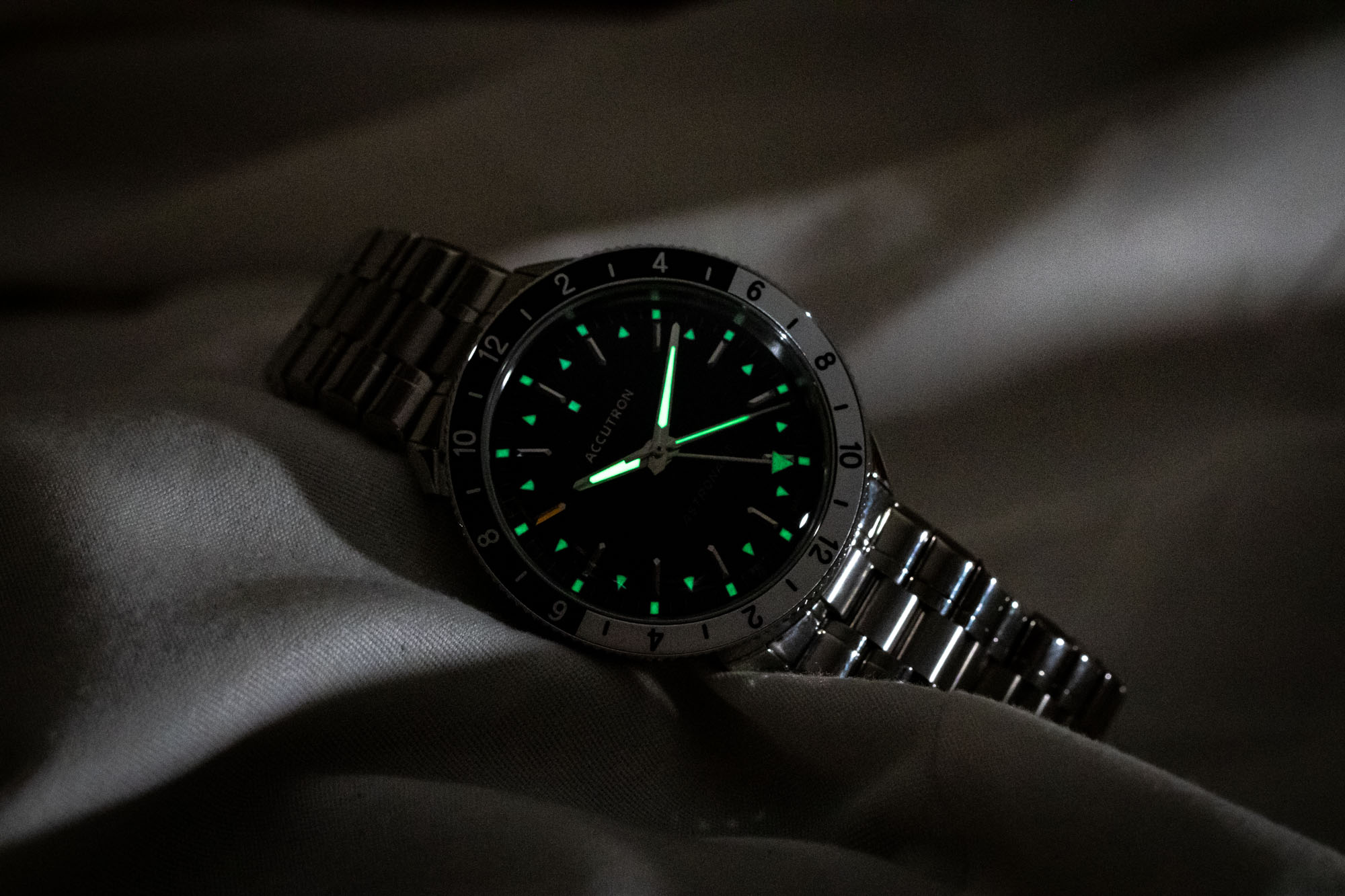
Fitted to the 20mm lugs is a modern version of the Astronaut’s signature “Bullet” style bracelet. Crafted from stainless steel with completely solid components, the bracelet features a five-link construction with high-polished surfaces and a single brushed center link running down the middle. The side links feature an outer angled profile that slopes downward to meet the wrist. Since the angled profile makes the first link slightly wider than the end link, the bracelet tapers from approximately 21.5mm-wide at the first link to 19mm-wide where it connects to its butterfly-style folding clasp with a double push-button release. One minor gripe I have is that the bracelet uses a pin and collar setup (rather than single-sided screws), and while the bracelet itself feels quite solid and comfortable on the wrist, the clasp lacks any type of micro-adjustment system. Additionally, there aren’t any half-links for the bracelet either, meaning that it might be a bit tricky for some people to find a perfect sweet-spot setup, especially if they happen to be between link sizes.
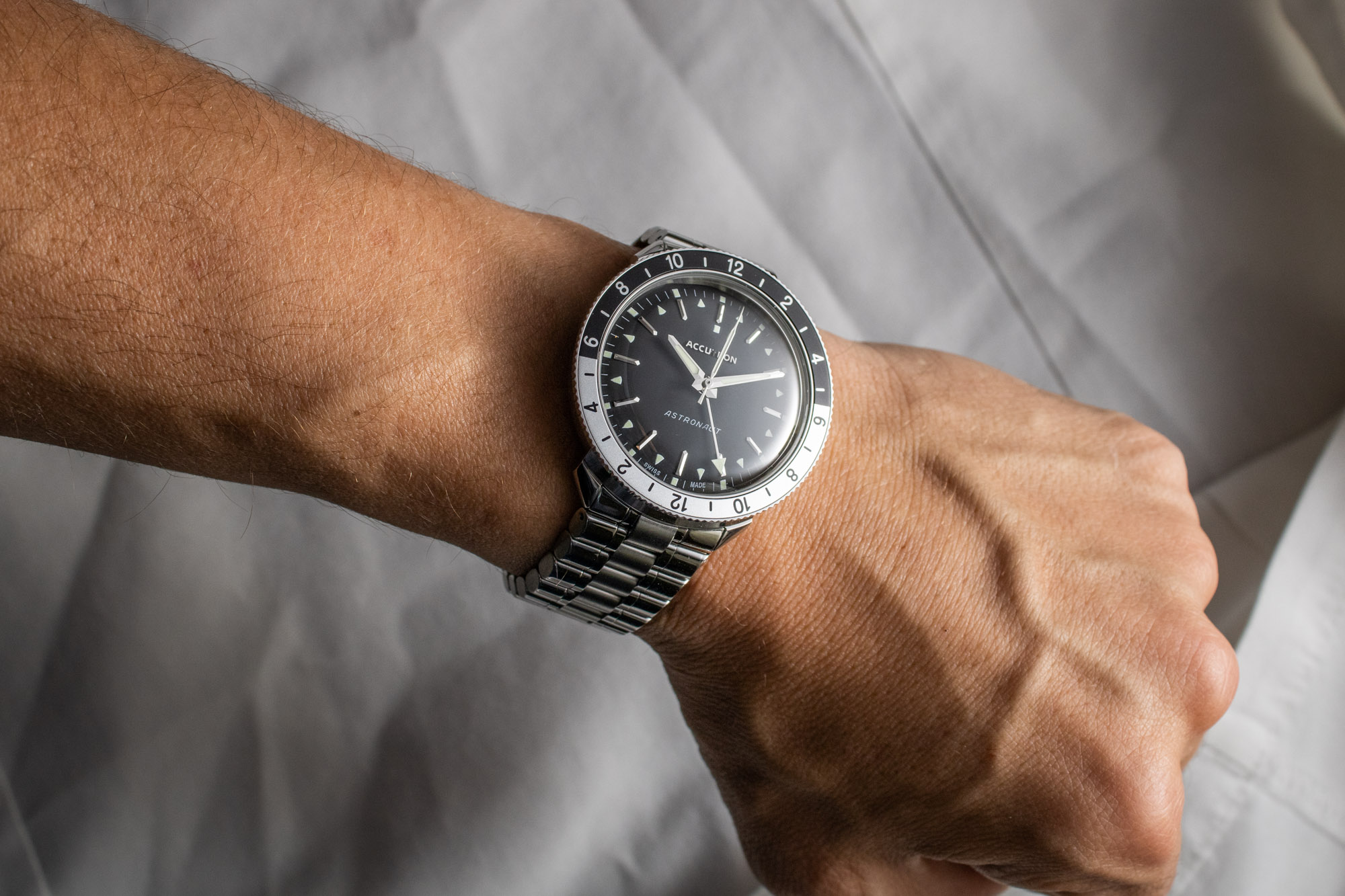
I personally enjoy the new Accutron Astronaut 1968 “T” Version Limited Edition watch quite a lot, but it does represent a significant enough departure from the vintage original that it may be too different for those who really just love the classic version. Not having a tuning fork movement makes it a very different timepiece on a functional level, and the proportions are larger to the point where it does make it feel noticeably chunky on the wrist. On top of that, with an official retail price of $3,500 USD, the modern Accutron Astronaut is quite a bit more expensive than a vintage example in very good condition. While sourcing an actual vintage version of a “T” variant from 1968 might prove to be a tall order these days, it’s undeniable that the modern Astronaut is hardly a more affordable alternative. However, arguably the two greatest factors working in the modern Accutron Astronaut’s favor are its exclusivity and worry-free ownership experience. As a limited edition of just 300 examples, it is quite a bit rarer than a vintage Astronaut, and with modern materials, solid water resistance, and a highly serviceable known-quantity movement, it does promise to be a watch that won’t be a headache to own or maintain over the course of long-term ownership. For more information on the Accutron Astronaut 1968 “T” Version Limited Edition, please visit the brand’s website.

